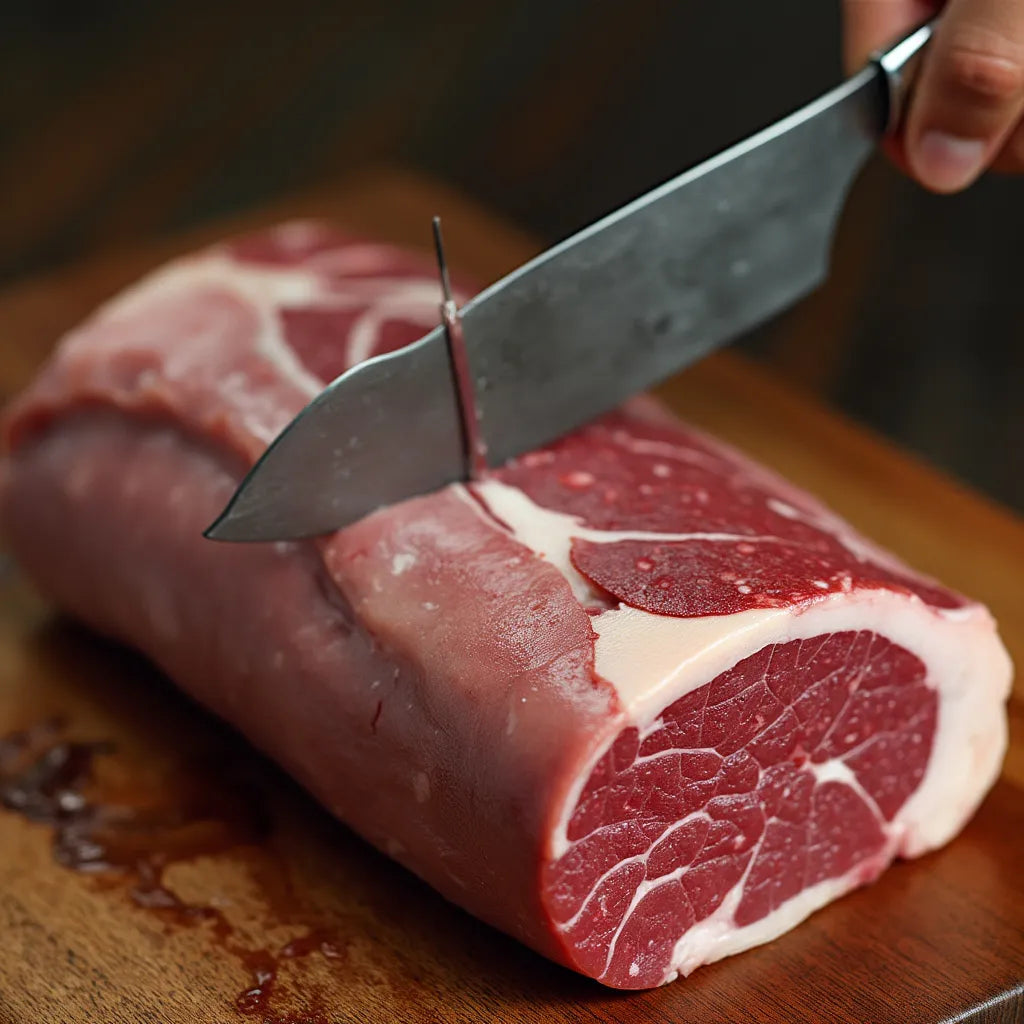
What is the Difference Between a Fillet Knife and a Boning Knife?
Share
When it comes to preparing meat, poultry, and fish, the right knife can make all the difference. Fillet knives and boning knives are two specialized tools, each designed for a specific purpose in the kitchen. While they might look similar at first glance, they have distinct features and functions that set them apart. In this blog, we’ll break down the differences between these two types of knives, helping you decide which is best suited for your cooking needs.
1. What is a Fillet Knife?
A fillet knife is a kitchen tool primarily designed for the delicate task of filleting fish. Its thin, flexible blade allows for precise cuts, enabling the user to separate flesh from the skin and bones with ease. The key features of a fillet knife include:
- Blade Length: Fillet knives typically range from 6 to 11 inches in length, with the size chosen depending on the type of fish being filleted.
- Flexibility: The blade's flexibility is crucial for maneuvering along the natural curves of the fish, minimizing waste and ensuring clean cuts.
- Thin Blade: The narrow profile of a fillet knife ensures accuracy when working with soft, tender meat like fish.
If you're an avid fisherman or simply enjoy preparing fish at home, investing in a high-quality fillet knife is essential.
2. What is a Boning Knife?
A boning knife, on the other hand, is designed for removing bones from meat, poultry, and even larger fish. While it shares some similarities with a fillet knife, its main features are tailored for tougher tasks. The characteristics of a boning knife include:
- Blade Length: Boning knives are generally 5 to 7 inches long, making them shorter than most fillet knives.
- Stiff or Semi-Flexible Blade: Unlike the highly flexible fillet knife, boning knives come with either a stiff or semi-flexible blade, depending on the type of meat being prepared.
- Sharp, Pointed Tip: The pointed end helps with piercing tough cartilage and joints, making it easier to separate bones from the meat.
Boning knives are an essential tool for breaking down cuts of meat, poultry, and even fish, especially for tasks that require strength and precision.
3. Key Differences Between Fillet and Boning Knives
While both knives are designed for precision, the differences lie in their purpose, blade design, and flexibility:
- Purpose: Fillet knives are mainly used for fish, while boning knives are more versatile and used for removing bones from meat and poultry.
- Blade Flexibility: Fillet knives feature highly flexible blades, allowing them to glide along fish bones, while boning knives are stiffer for added control when cutting through tougher tissue.
- Blade Length: Fillet knives tend to be longer and thinner compared to boning knives, which are shorter and have a broader blade.
If you frequently cook fish, a fillet knife is your go-to tool. For general meat preparation, a boning knife offers more versatility.]
4. When to Use Each Knife
Knowing when to use a fillet knife versus a boning knife can make a significant difference in your kitchen experience. Here’s a quick guide:
- Use a Fillet Knife: When filleting fish, skinning fillets, or performing intricate cuts on delicate proteins.
- Use a Boning Knife: When deboning chicken, trimming fat, or breaking down larger cuts of meat that require a stronger, sturdier blade.
Using the right knife for each task will ensure cleaner cuts, reduce waste, and improve your overall cooking efficiency.
5. Choose the Right Knife for Your Kitchen
Whether you need a precise fillet knife or a versatile boning knife, it’s important to invest in a tool that’s built to last. At Dream Chef Tools, we offer a range of high-quality knives, including both fillet and boning knives. Each knife is crafted with precision and durability in mind, making them the perfect addition to any kitchen.
Conclusion: Fillet Knife vs. Boning Knife - Which One Should You Choose?
Both fillet and boning knives are essential tools for any kitchen, but their unique features make them suitable for different tasks. If you frequently prepare fish, a fillet knife is a must-have for achieving precise, clean cuts. On the other hand, if you work with a variety of meats, a boning knife will be your best friend for removing bones and trimming fat.

